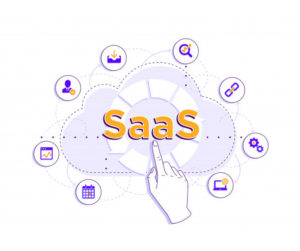Software as a Service (SaaS), now extremely popular and prominent in the IT market, is one of the dominant deployment methods opted by enterprises ranging from massive corporations to tiny organizations. Also known as cloud-based software, SaaS is one of the three major categories of cloud services, along with Infrastructure as a Service (IaaS) and Platform as a Service (PaaS). It is a method of software delivery that allows data to be accessed from any device that has an Internet connection and a web browser. In this web-based model, the software is licensed on a subscription basis and is centrally hosted by a vendor or a service provider. Some examples of SaaS include Google Docs, Microsoft Office 365, content management systems, customer relationship management tools and integrated development environments (IDEs).
From an organization point of view, an application can be used on a rental basis and the users can connect to it over the Internet, usually with their web browsers. They can also use application programming interfaces (APIs) like REST or SOAP to connect the software to other functions. All the required infrastructure, middleware, application software, and application data are located in the service provider’s data center. The service provider manages the software and hardware, and with the appropriate service agreement, ensures the availability and security of the application and its data.
The major factor that drives the popularity of SaaS-based applications is the series of benefits it has to offer the organizations. SaaS manages to provide various advantages in a typical business environment, some of which are:
• Less Up-front Costs: Since SaaS is subscription based and has no up-front license fees, it reduces the initial costs. Moreover, the costs for hardware and software maintenance is also minimal.
• Accessibility: With data being stored in the cloud, users can access their information from any device having an Internet connection and web browser.
• Quick Set Up and Deployment: With SaaS application being installed and configured in the cloud, the software deployment delay is minimised.
• Scalability: The service providers offer many subscription options to choose from, and the flexibility to change it as and when needed.
• Updates and Patches: As SaaS applications run in the cloud, the vendor can update their software centrally, thus removing this workload from its users.
Virtualization can be conceptualized as the simulation of hardware functionality for the creation of a virtual system. Put into simple words, it means to create a virtual version of a resource such as server, desktop, operating system, file, storage or network. These resources or hardware elements of a single computer are divided into multiple virtual computers, called virtual machines (VMs). Each virtual machine behaves like an independent computer running its own operating system (OS), when in reality it runs on a portion of the actual computer hardware. Virtualization, thus enables more efficient utilization of computer hardware and allows a greater return on the hardware investment of the organization.
The key technology that powers cloud computing is undoubtedly virtualization. In an enterprise, it can enhance the ability of SaaS applications. SaaS clearly is an application instance of virtualization. In fact, virtualization brings significant benefits to SaaS-based enterprises. It is also the most effective way to reduce IT costs and has the ability to provide faster development and test mechanisms by creating development and test environments rapidly.

With regard to SaaS infrastructure, virtualization can be used to address the hardware problems from a cloud computing point of view. It can also be useful in managing deployment, support and maintenance. Most importantly, virtualization makes it possible to separate or break down an application into distinct features that does not overlap in their functionality. Thus, it makes it possible to improve the scalability of infrastructure while still utilizing the underlying hardware to its utmost capacity.

Virtualization has been a hot topic for the past few years. Some of the advantages that virtualization can offer the enterprises include:
We are moving slowly but steadily to a world where computing resources and applications will be virtual, from Testing as a Services (TaaS) to Software as a Service (SaaS), organizations will be formed around virtual network access. Both virtualization and SaaS are interconnected in a way that after your data and server is virtualized, it is integrated to a cloud service. Together with virtualization, SaaS definitely proves to be a powerful combination for enterprises.